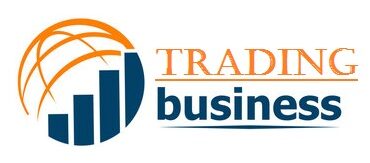Global macro trading is a sophisticated strategy employed by investors and traders to capitalise on broad economic and political trends. This approach involves analysing macroeconomic factors and their impact on various asset classes to make informed trading decisions. Understanding intermarket relationships and cross-asset correlations is crucial for anyone looking to navigate the complex world of global macro trading. This article delves into the fundamentals of global macro trading, explores the key relationships between different markets, and discusses how cross-asset correlations can be leveraged to develop effective trading strategies.
Fundamentals of Global Macro Trading
Global macro trading revolves around the analysis of macroeconomic indicators and their influence on different asset classes. At its core, this strategy seeks to identify and exploit broad economic trends to make profitable trades. Macroeconomic factors such as GDP growth, inflation rates, and employment figures play a significant role in shaping market movements.
The major asset classes involved in global macro trading include currencies, commodities, equities, and bonds. Each of these asset classes responds differently to economic events and policy changes, and understanding their interactions is key to successful trading.
Central banks and government policies are central to global macro trading. Central banks, through their monetary policies, influence interest rates and liquidity in the economy. These policies affect currency values, inflation rates, and overall economic stability. Fiscal policies, on the other hand, involve government spending and taxation decisions that impact economic growth and market sentiment. To get started, discover more here.
Intermarket Relationships
Intermarket analysis is a vital component of global macro trading. It involves examining how different markets interact with each other and how changes in one market can affect others. This analysis helps traders and investors understand the broader economic picture and make informed decisions.
One of the primary intermarket relationships is between equities and bonds. The dynamics of the yield curve—a graphical representation of interest rates across different maturities—offer insights into economic expectations. When bond yields rise, it often signals expectations of higher inflation or stronger economic growth, which can lead to declines in equity prices. Conversely, falling yields might indicate economic slowdown or deflation, potentially boosting equity markets as investors seek higher returns.
Another significant relationship is between commodities and currencies. Commodity prices often impact currency values, especially for countries that are major exporters of commodities. For instance, a rise in oil prices can strengthen the currency of an oil-exporting country, while a drop in prices can weaken it.
Cross-Asset Correlations
Cross-asset correlations refer to the relationships between different asset classes and how their price movements are interconnected. Understanding these correlations is essential for global macro traders, as it helps in assessing market risks and identifying opportunities.
Correlations can be positive or negative. Positive correlations occur when asset prices move in the same direction, while negative correlations happen when prices move in opposite directions. For instance, equities and bonds often exhibit a negative correlation; when equities perform well, bonds might underperform, and vice versa. This relationship can help traders diversify their portfolios and manage risk.
Dynamic correlations are another important aspect to consider. These correlations can change depending on market conditions, such as during periods of high volatility or economic uncertainty. By analysing dynamic correlations, traders can gain insights into how different asset classes might react to changing economic scenarios and adjust their strategies accordingly.
Strategies in Global Macro Trading
Global macro trading strategies often involve trend following and momentum approaches. Trend-following strategies capitalise on the persistence of macroeconomic trends, such as sustained economic growth or rising commodity prices. Traders identify these trends through economic indicators and adjust their positions accordingly to profit from prolonged market movements.
Mean reversion strategies, on the other hand, are based on the concept that asset prices tend to revert to their historical averages over time. In the context of global macro trading, this means identifying instances where asset prices deviate significantly from their historical norms and positioning trades that anticipate a return to the mean.
Arbitrage opportunities also play a role in global macro trading. Arbitrage involves exploiting price discrepancies between related asset classes to make a profit. For example, if a currency is undervalued relative to its historical correlation with commodity prices, a trader might take advantage of this mispricing by buying the currency and shorting the commodity.
Challenges and Considerations
Global macro trading is not without its challenges. Market volatility and uncertainty can significantly impact trading strategies. During periods of high volatility, asset prices can become unpredictable, making it difficult to rely on historical correlations and trends. Traders must be prepared to adapt their strategies and manage risks effectively in such environments.
Economic and political risks also pose challenges for global macro traders. Geopolitical events, policy changes, and economic disruptions can lead to sudden and unexpected market shifts. Staying informed about global developments and understanding their potential impact on different asset classes is crucial for navigating these risks.
Conclusion
In summary, global macro trading is a complex but rewarding approach that involves analysing intermarket relationships and cross-asset correlations. By understanding the interactions between different markets and leveraging these insights, traders can develop informed strategies to navigate the financial landscape. As the markets continue to evolve, staying adaptable and informed will be key to success in global macro trading.

